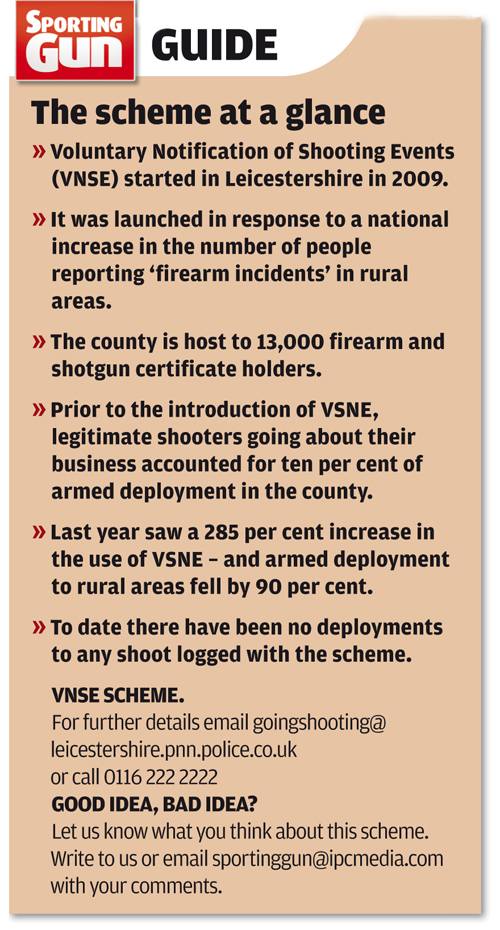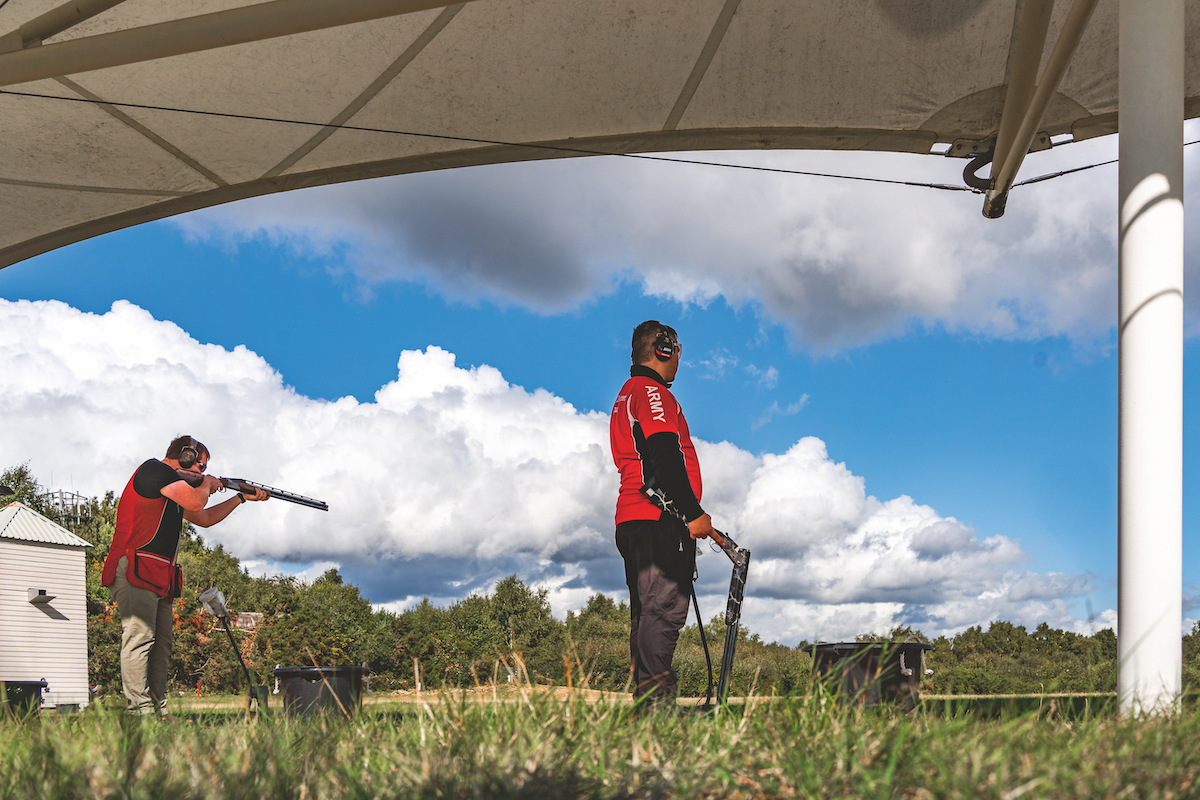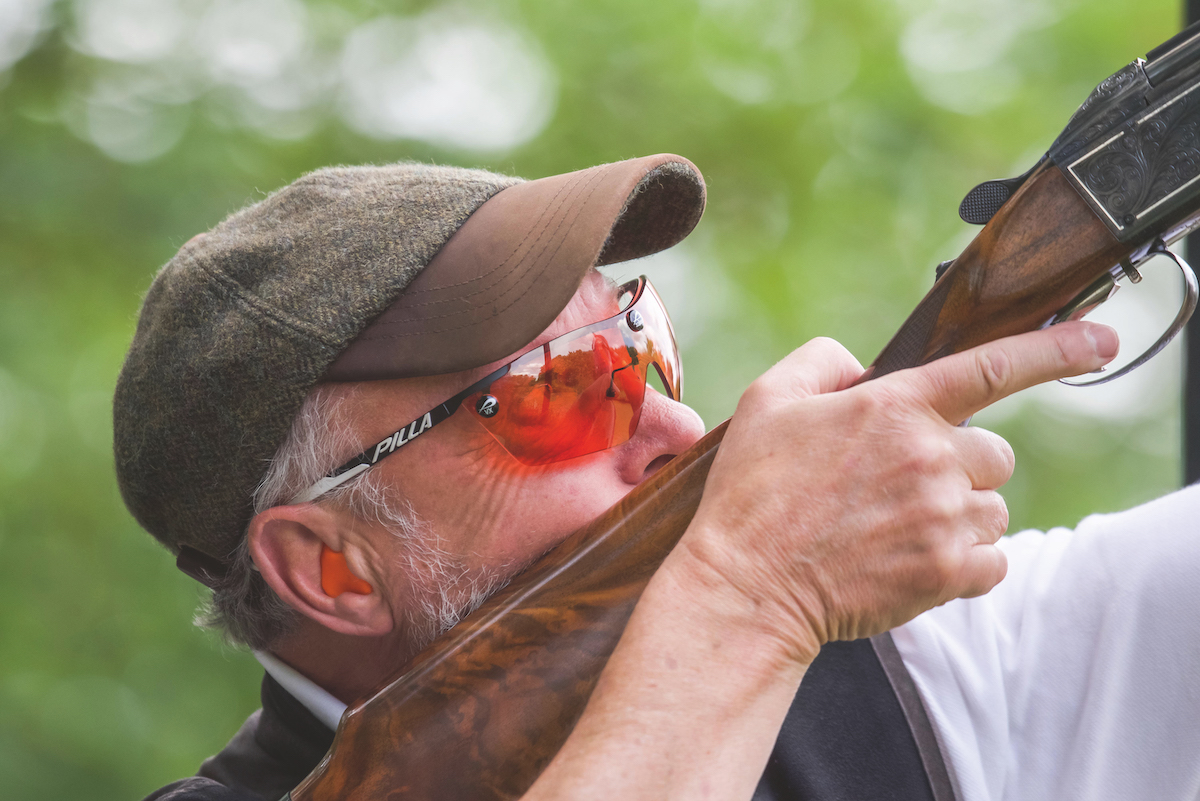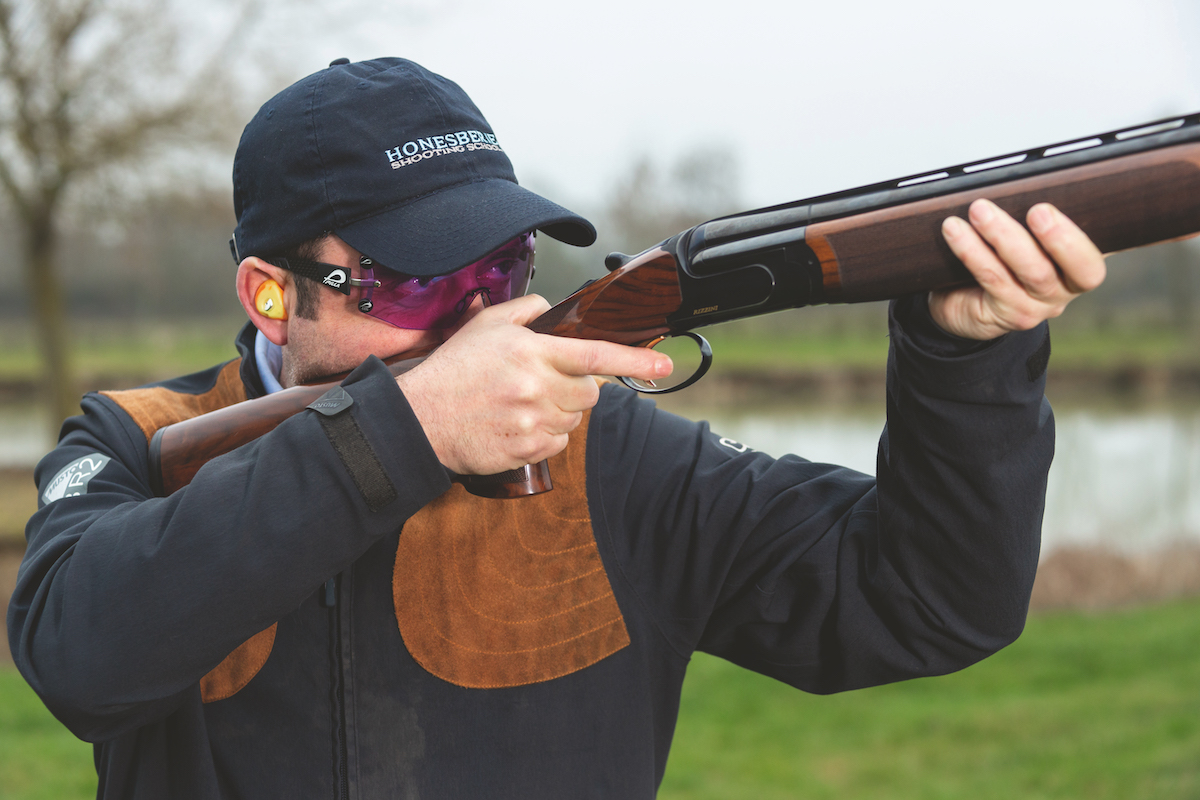Voluntary Notification of Shooting Events
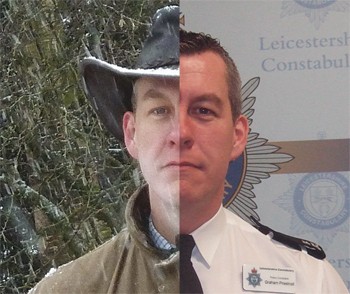
All in all it hasn’t been a bad season on my local shoot. The birds flew well, gave some excellent sport and our team of Guns always looked forward to the next shoot day.
Now that the game season has ended my thoughts have turned to more practical issues and top of the list is serious pest control – continuing my ongoing and seemingly never ending battle against the fox, rabbit and pigeon populations around here.
Like many sporting shooters, though, I always find this is a bit of an in-between time of year, so it seemed an ideal opportunity to put some thoughts on paper concerning an issue I feel is important to us all.
I’m a police officer working on Leicestershire Constabulary’s Armed Response Unit and part of my time is spent on the development of our Voluntary Notification of Shooting Events (VNSE).
There are more than 13,000 licensed firearms and shotgun certificate holders in Leicestershire alone, and this doesn’t include the many others involved in pest control with air rifles.
The police are fully aware these people are genuine and are participating in lawful shooting events and pest control.
SUSPICIOUS MAN IN A BALACLAVA
However, nationally – and certainly within Leicestershire – there has been a significant increase in the public reporting firearms’ related incidents in rural areas.
These incidents are often vague but often mention, for instance, ‘Suspicious man in a balaclava with a long-barrelled gun,’ or it may be a report of ‘shots heard near to a road or footpath.’
The police have a duty of care towards the public and are often under an obligation to deploy armed officers to check out the situation.
This can, and has, led to unnecessary interactions between legitimate shooters and armed police, at a significant cost.
(It’s worth noting that before we set up the VNSE scheme this type of incident accounted for almost 10% of armed deployments in the county.)
The VNSE was in place and running for April 2009 and had a reasonable level of success in its first year.
However there was a considerable resistance from the shooting community and organisations who represented them.
From the start, it was clear people did not feel the police had an understanding of sporting shoots, pest control, or in fact any countryside sporting matter.
There were some genuine concerns based around the civil liberties of legitimate shooters.
Many felt the police were insisting they contact a police station every time they went shooting.
There was also a feeling that the scheme was a first step towards even more restrictive legislation in the sport.
Sitting on both sides of the track, and knowing both sides of the issue, I was asked to complete a review of the VNSE and revise our approach to it.
WHEN, WHERE AND WHY?
First, I must impress the critical principle of the scheme: there is NO requirement to contact the police every time you go shooting.
All we ask is that you, or a member of your group, contact us if you will be seen by the public and you feel your actions may be misinterpreted.
Last summer, for example, I was out lamping almost every other night but I only contacted the police three times.
And I only use the system a few times during the season for our driven shoots, and then simply because we may be shooting in view of a fairly busy road for short periods.
The VNSE is simple and easy to use.
It takes just a quick telephone call (or email) to let us know basic details of who, where and when a shoot will take place, a contact phone number and details of any vehicles being used (if you are out lamping for instance).
MAKE A BLOCK BOOKING
Information can be added such as, whether the caller will be using a hide or camouflage while shooting, or the type of gun being used.
If there is a regular event one call can be made to make a block booking over weeks or even months.
The details are placed on an electronic diary, which can be accessed by our control room commanders if they receive a call from a concerned member of the public.
We have recently had examples of firearms commanders being able to contact people on the diary, which then negates the need to deploy armed officers.
Since our April 2010 review of the scheme we have seen an increase in the use of the VNSE by 285%.
In the same period we have also noted a decrease in armed deployments to suspicious rural incidents of 90%.
The scheme is proving very successful and unobtrusive to the people good enough to use the system.
To date there have been no armed deployments to any shoot logged on the VNSE Diary.
I would encourage anyone who enjoys shooting or pest control in or near urban areas to contact us if necessary.
This system is proven to work and helps to protect the shooting community.
